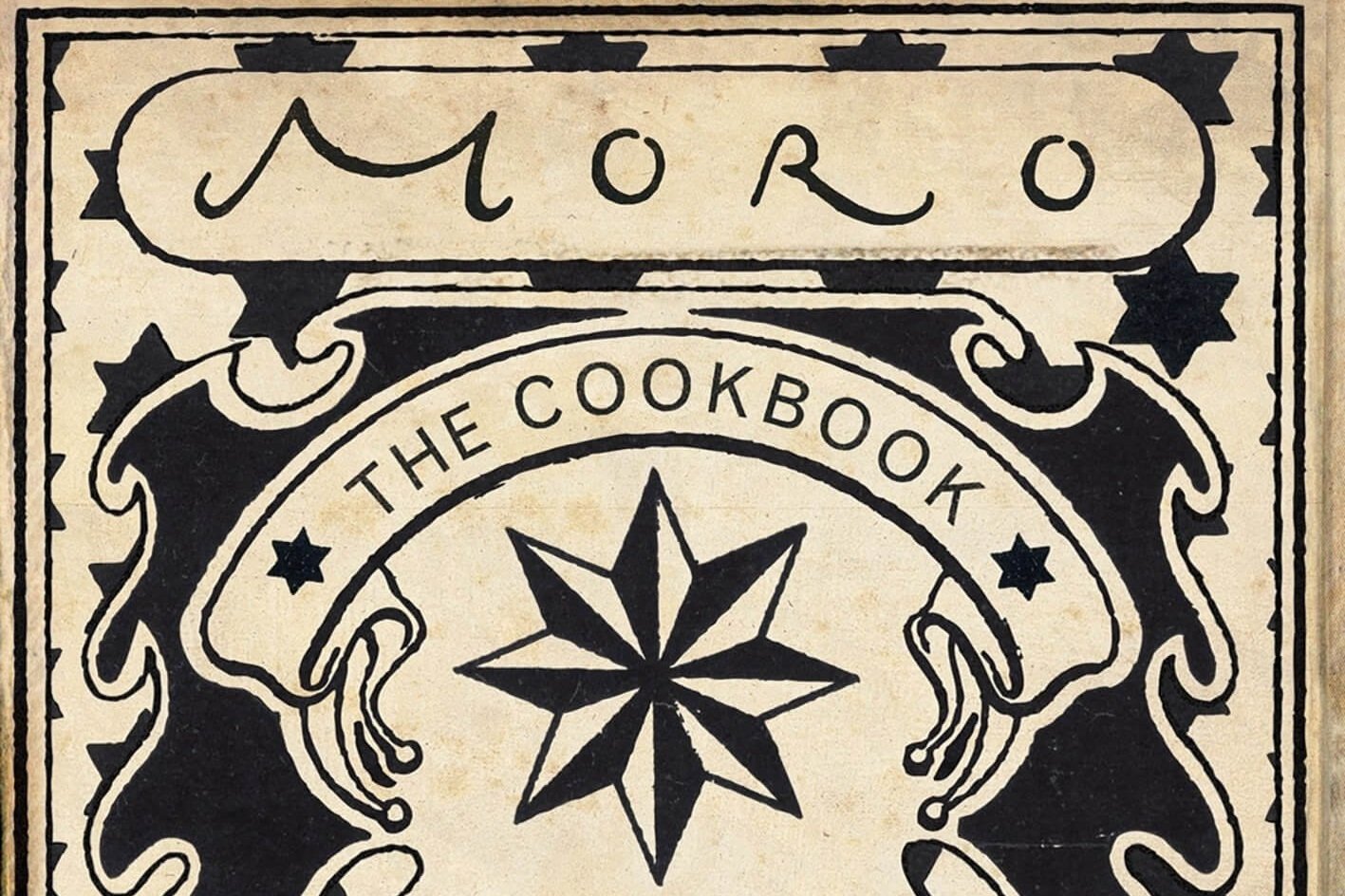Author Profile: Rena Salaman
In the world of Greek cuisine, Rena Salaman is a revered figure whose culinary journey has spanned a lifetime. Her latest work, an updated and expanded edition of her bestselling book, The Food and Cooking of Greece, delves into the classic regional dishes of Greece, celebrating the essence of Greek food through the seasons.
ckbk met with Rena to explore her favorite Greek dishes, culinary trends she finds intriguing, and her cherished childhood memories tied to Greek cuisine.
Greek cuisine, with its emphasis on fresh, quality produce and creative vegetable-based dishes, sets itself apart in the Mediterranean culinary landscape. Rena sheds light on what makes Greek cuisine truly unique and shares her ultimate Greek dish - the one she'd choose to enjoy for a lifetime - a testament to the enduring appeal of Greek culinary traditions.
Imagine you're on a deserted Greek island with only three ingredients to cook with. What are those three ingredients, and what dish would you create?
Eggs, tomatoes and olive oil. I would make the Greek dish Strapatsatha from the island of Corfu. A summer dish and a kind of scrambled egg with a fresh tomato sauce. Quick, simple and absolutely delicious.
With an updated and expanded edition of your best-selling book, you must have come across some exciting culinary discoveries. Are there any new trends or developments in Greek cuisine that you find particularly intriguing or delicious?
I would say that a new trend of combining “sweet and sour” in unexpected dishes has appeared in Greece. Although traditionally we have had dishes such as meat cooked with quince, or cheese and meat pies that included raisins or sultanas. Considering that in Greece we have a “very sweet tooth”, it is not surprising that this new trend has found a rather fertile audience!
As a result, in the last 10 years, this trend has been much more widespread and daring and still evolving. So old and traditional dishes such as Saganaki - fried salty Kefalotyri cheese - now could be served with a drizzling of honey or a sharp mandarin marmalade instead of the ubiquitous lemon juice over it.
We have also become more daring in adding other sweet-tasting ingredients to our green salads such as bits of fresh or dried figs, dried sultanas, or raisins. As they do at Tassia’s - one of the best restaurants on the Aegean island of Alonnisos where we have our summer house. The seaside town of Kalamata in Peloponnese is also the home of an array of balsamic vinegars or balsamic creams - sometimes with pomegranate or fig and honey - produced there. They are a vital ingredient in this new trend of “sweet and sour” in salads or cooked dishes.
Your childhood in Athens seems to have had a profound influence on your passion for Greek food. You write in the book about memories of the smell of jasmine and lunches next to a dazzling white pebble beach. Can you share one vivid childhood memory related to Greek cuisine that has stayed with you throughout your life?
Yes, absolutely! I remember coming home at lunchtime from school and smelling the all-engulfing aroma of semolina fried in olive oil from 20 minutes away. This only signified one thing - halva was being made! A real treat we had as children in the early fifties when not many other sweet and expensive treats were available.
Halva with its everyday cheap ingredients of olive oil, semolina, sugar, and water was - and still is nowadays - extremely popular. Sometimes my grandmother would also add toasted pine nuts from a huge pine tree that her sister had in her garden in the Athenian seaside resort of Voula.
Halva, which arrived in Greece in 1922 with the immigrants arriving there after the Smyrna catastrophe - has also been rediscovered nowadays in Greece and it is automatically served at the end of a meal in most of our lovely beach restaurants in Alonnisos. And like other traditional dishes, it is also evolving. Nowadays apart from toasted pine nuts, it may include toasted almonds, sultanas or even cubes of dried figs as Nikos served it to us at the lovely Tassia’s restaurant in the tiny harbour of Steni Vala this summer.
What was the last thing you made from the book?
Kritika Koulourakia (also known as Paximathakia). I am always making them because they are perfect with tea or coffee - everyone loves them and they are so easy to make.
Greek food often involves a lot of communal eating and sharing. In the book you write "Greek food for Greeks is never simply food. It is always a celebration – of country, family, friends." Can you share a memorable dining experience in Greece where the sense of community and food came together in a special way?
We have a good friend on our island who at the beginning of every summer invites all of us - his friends and many others - to a lavish meal at one of the beach restaurants. This is always an exciting occasion full of joy. Everyone reunites after a year’s absence with all our children and grandchildren - all a year older, some of them wiser, others more naughty - and for a few hours round a table above the sea or under a huge olive tree, the waves of warmth, friendliness and joy are palpable.
It is a lunch that lasts until sunset and always has some spectacular fish at its heart — a huge and glistening red snapper or the Greek star of the sea barbounia (red mullet) or sweet-tasting huge synagrida (dentex) —and an endless assortment of salads, dips, and vegetable dishes.
In a smaller scale, we do the same at home throughout the summer. We invite friends for either a swim and a late lunch round our large, white, marble table under our biggest olive tree or for dinner under the stars. The occasion is always full of excitement and joy and catching up with friends and family round some familiar and always delicious food. The best way to sustain friendships!
Are there any lesser-known Greek dishes or ingredients that you think more people should know about and try?
One of the lesser-known ingredients is artichokes and the way we cook them in Greece. Not just boiled or fried with eggs, but in delicious casseroles with fresh peas or fresh broad beans or with potatoes and carrots or with spring lamb, with or without egg and lemon sauce. For me the artichoke with its unique taste and texture is the queen of vegetables.
Greek cuisine is known for its use of fresh, quality produce. Do you have any tips for people who want to recreate authentic Greek dishes in their own kitchens, especially when they may not have access to Greek ingredients?
As far as frugal ingredients go I would single out our use of beans, chickpeas and lentils into delicious winter soups or summer salads with a multitude of summery ingredients such as red onions or spring onions, tomatoes, cucumbers and bunches of aromatic herbs. My grandmother would feed the whole family with a delicious gigantic chickpea salad and a handful of crispy fried anchovies or sardines or squid.
Rena Salaman's Dolmathes (stuffed vine leaves with rice and herbs) from The Food & Cooking of Greece. This photograph was taken at Rena’s summer house on the Aegean island of Alonnisos.
As someone with a lifetime of experience in cooking, eating, and writing about Greek food, what do you believe sets Greek cuisine apart from other Mediterranean cuisines?
Primarily I think in our wealth of different vegetables and in our multiple ways of using and transforming these vegetables. The easiest way is in casseroles but also in salads, in dips, fried, or in pies. Think of our delicious artichoke dishes in the spring, our fresh green bean casseroles in early summer or okra with fresh tomatoes in later summer. Our mouthwatering aubergine and courgette dishes - in baked Briami, or in fried slices served with refreshing Tzatziki, in Mousaka or in a glorious Imam - the crown of summer cooking. Or in pies with fresh spinach and cheese or grated courgettes and cheese and always with bunches of aromatic dill, parsley, and fresh mint. Our love of fresh dill - always associated with spring in my mind - is unique. But also in our use of fish of all sizes and seafood in our everyday life.
If you had to choose just one Greek dish to eat for the rest of your life, which one would it be, and why?
It would be the spring dish Dolmathes - fresh vine leaves filled with rice, onions and mountains of fresh herbs or Yiemista - baked, summer vegetables like tomatoes and peppers stuffed with rice, onions and herbs. They always fill me with joy. The glory of the Greek kitchen!
ckbk Premium Members have access to the full content of The Food and Cooking of Greece.
Popular recipes from The Food and Cooking of Greece
ckbk caught up with Samantha Clark to explore the profound influence of the original Moro cookbook.
Lucy Parr, author of The Friendly Baker, tells us how she came to write her first cookbook.
Gabriella English speaks to Warner about his style of cooking and how it has developed.









